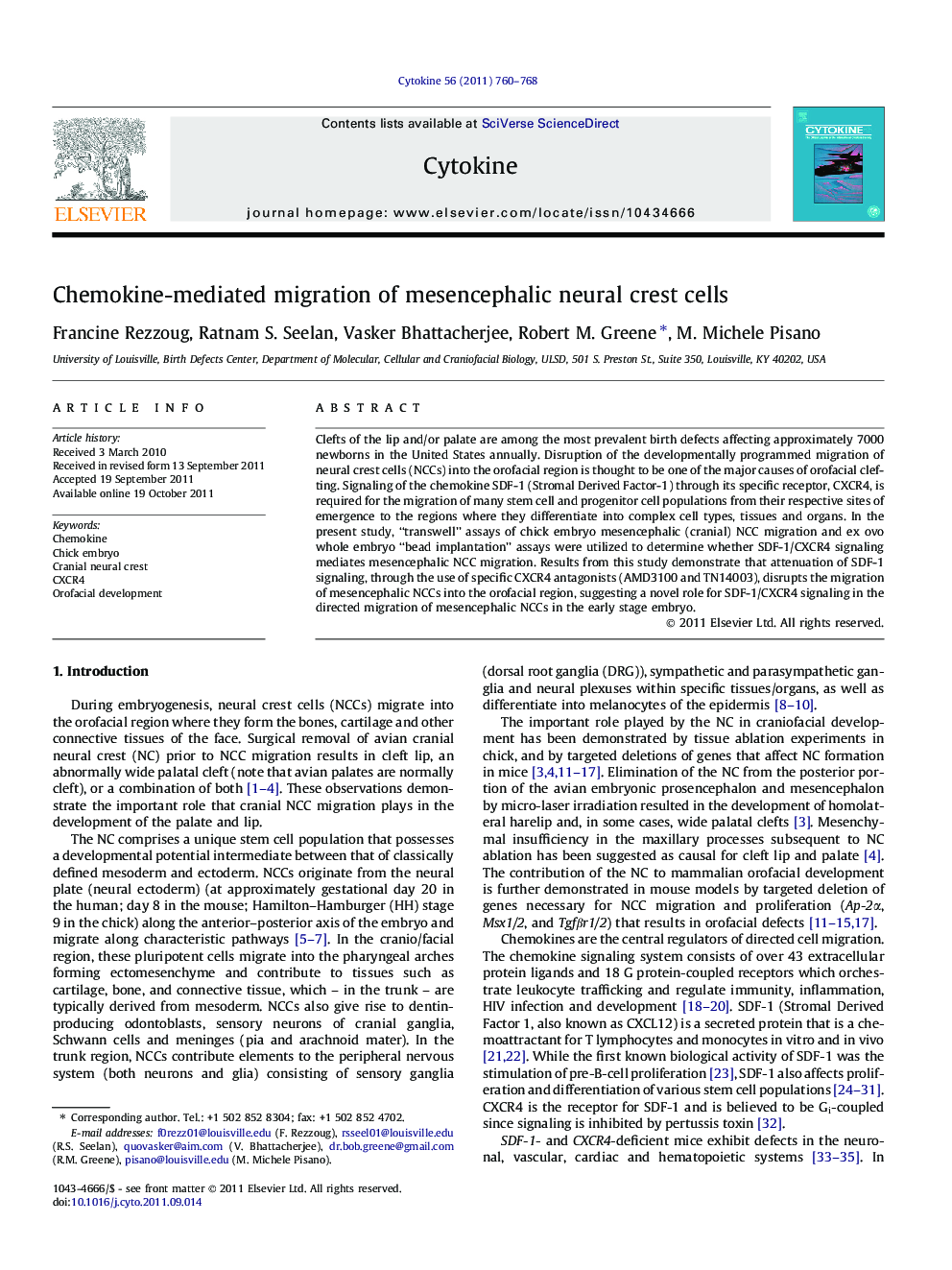| Article ID | Journal | Published Year | Pages | File Type |
|---|---|---|---|---|
| 5898336 | Cytokine | 2011 | 9 Pages |
Clefts of the lip and/or palate are among the most prevalent birth defects affecting approximately 7000 newborns in the United States annually. Disruption of the developmentally programmed migration of neural crest cells (NCCs) into the orofacial region is thought to be one of the major causes of orofacial clefting. Signaling of the chemokine SDF-1 (Stromal Derived Factor-1) through its specific receptor, CXCR4, is required for the migration of many stem cell and progenitor cell populations from their respective sites of emergence to the regions where they differentiate into complex cell types, tissues and organs. In the present study, “transwell” assays of chick embryo mesencephalic (cranial) NCC migration and ex ovo whole embryo “bead implantation” assays were utilized to determine whether SDF-1/CXCR4 signaling mediates mesencephalic NCC migration. Results from this study demonstrate that attenuation of SDF-1 signaling, through the use of specific CXCR4 antagonists (AMD3100 and TN14003), disrupts the migration of mesencephalic NCCs into the orofacial region, suggesting a novel role for SDF-1/CXCR4 signaling in the directed migration of mesencephalic NCCs in the early stage embryo.
⺠Failure of embryonic neural crest cell (NCC) migration can cause orofacial clefts. ⺠We examine the role of SDF-1/CXCR4 signaling in mesencephalic NCC migration. ⺠Transwell culture and bead implantation in avian embryos provide quantitative data. ⺠The CXCR4 antagonists, AMD3100 and TN14003, inhibit NCC migration. ⺠SDF-1/CXCR4 signaling is, thus, required for the migration of mesencephalic NCCs.
